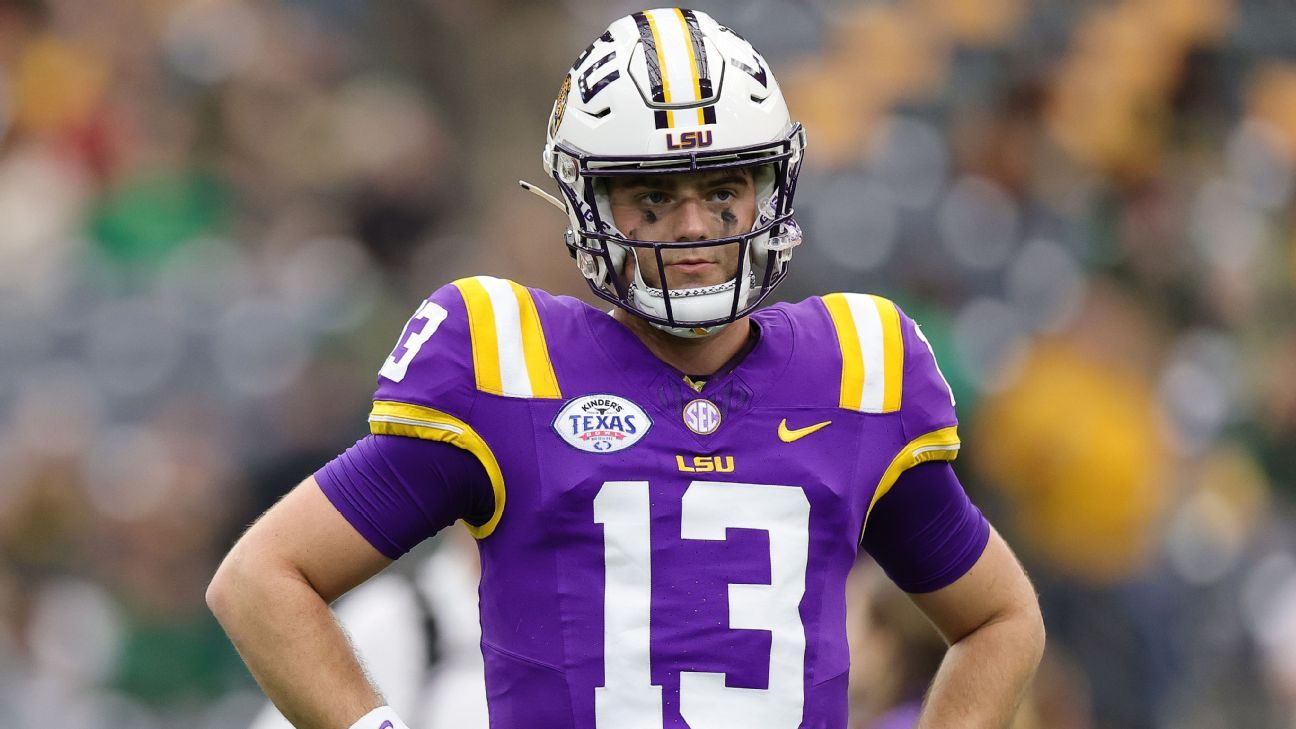Matt Miller, ESPN’s NFL Draft Analyst since 2021 and a former senior draft analyst at Bleacher Report for 11 years, provides an in-depth early analysis of the 2026 NFL Draft prospects as the draft preparation intensifies ahead of next April. Miller’s rankings incorporate insights from film study and conversations with scouts and front-office executives across the league, addressing questions about the strength of position groups like edge rushers, offensive tackles, and the much-discussed Archmanning phenomenon.
Starting with quarterbacks, the buzz surrounds Archmanning from Texas, who, despite limited starts, is seen as a potential face of college football but isn’t yet proven as an NFL-ready talent. Scouts largely predict he will remain at Texas through 2025. Unlike previous years, there’s no clear standout QB1 for the 2026 class, but players like Jaden Daniels and Cameron Ward have shown promise, and prospects like Fernando Mendoza and Lanoris Cellar are also gaining attention. Miller currently ranks Klubnik as the top quarterback pick early on, noting his improved performance and potential.
The running back class features standout Kenneth Love from Notre Dame, coming off a strong season but hampered by a late injury. Love is regarded by general managers as the clear best in the class, offering a complete skill set. Other notable backs include Singleton, known for size and versatility, and several promising duos from Texas and Pennsylvania.
Wide receivers in 2026 may not match last year’s elite class, but prospects like Tyson show impressive skills as a deep-threat burner with potential first-round talent, although consistency remains a concern. Other receivers like Lemon, Horton, and Williams are in the mix to challenge Tyson for top honors.
Tight ends have solid depth but not the early-round draft impact seen in recent years. The “stalker” tight end, with elite route-running and versatility, leads the class but faces skepticism about fitting into certain offensive schemes. Oregon’s Sadiq is also highlighted for his breakout potential.
The offensive tackle group promises high-quality talent, potentially better than last year’s class that featured three top-10 picks. Fano, Proctor, and Mauigoa head this group, each bringing distinct skills like agility, power, and consistency to the position. Several others are rising prospects, making this a diverse and exciting class for NFL teams.
Interior offensive linemen present a tight competition, with notable players like Greene and Slaughter praised for strength, agility, and versatility. Greene’s pass protection and overall resume give him a slight edge.
Defensive tackles are considered a weaker group this year, with Woods standing out as a strong run defender and pressure rusher, alongside Banks, who showed significant progress last season. Scouts note the overall lack of depth and impact playmakers in this position group.
Edge rushers form one of the most competitive groups outside quarterbacks, featuring talents like Parker, Folk, Bain Jr., and Bailey, all rated highly for their blend of speed, power, and technique. Parker currently holds the top spot due to his balance and strength.
Linebackers are somewhat devalued overall, but Hill’s versatility and unique skill set make him a standout with potential top-five pick status. Allen is noted for his all-around play and speed, but Hill’s elite blitz ability sets him apart.
At cornerback, McCoy is the top-rated prospect despite an ACL injury. His speed, agility, and ball skills put him ahead, with Terrell also gaining praise as a technically sound, though smaller, defender.
Safety is led by Downs, regarded as a rare talent with the size, speed, and versatility to be an elite NFL player, potentially the top overall pick. Thieneman and others are also strong candidates, but Downs stands out for his explosive play style and capabilities.
Fan Take: This comprehensive draft preview is crucial for NFL fans as it highlights emerging college talents who could shape the future of their favorite teams. Understanding these prospects and their potential impact not only fuels draft day excitement but also provides insight into the evolution of the sport’s key positions.



